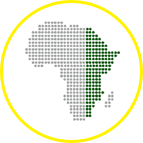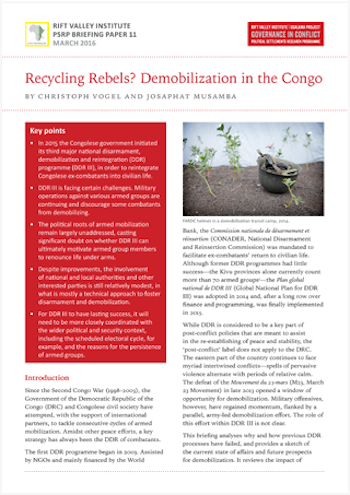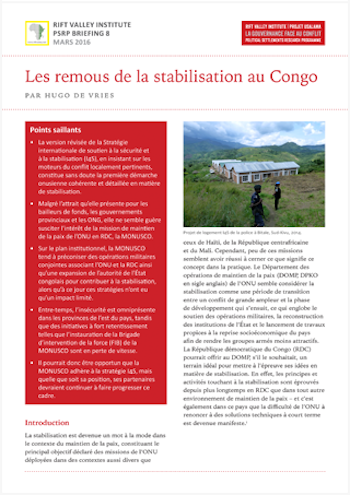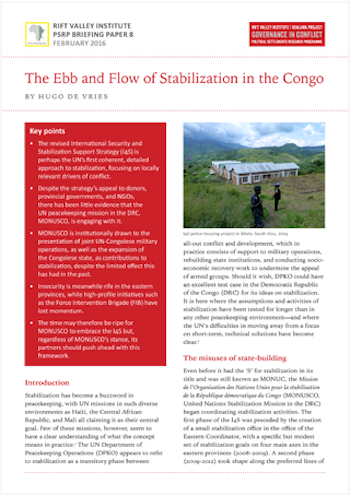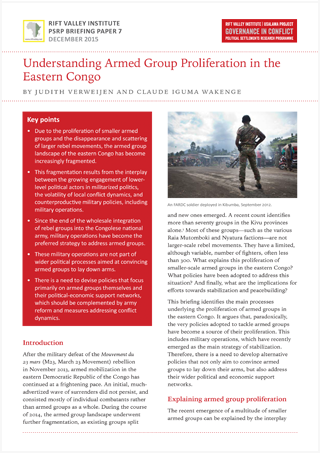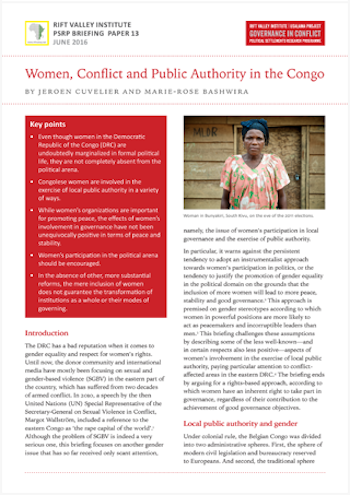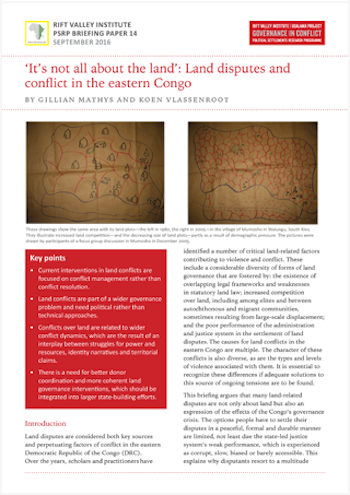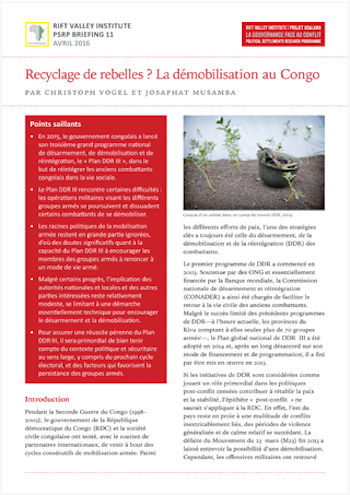This briefing examines the emergence of the Somali migration route to Uganda and its significance in the long history of Somali migration in East Africa. It discusses the factors underlying the decision-making processes of Somali refugees in relation to…
RVI publishes books, research reports, research papers, briefings and meeting reports in a range of formats. Publications cover policy, research, arts, culture and local knowledge in the countries of eastern and central Africa. Research publications—books, reports and papers—are peer-reviewed. Some RVI publications are also available in French and/or Arabic.
The RVI is a signatory of the Budapest Open Access Initiative (2001); all publications are free for download in PDF format under Creative Commons licences. The views expressed in books and reports published by the RVI are those of the authors, not the Institute.
SEARCH
PUBLICATION TYPE
LANGUAGE
REGION
COUNTRY
Since the Second Congo War (1998–2003), the Government of the Democratic Republic of the Congo (DRC) and Congolese civil society have attempted, with the support of international partners, to tackle consecutive cycles of armed mobilization. Amidst other peace efforts,…
La stabilisation est devenue un mot à la mode dans le contexte du maintien de la paix, constituant le principal objectif déclaré des missions de l’ONU déployées dans des contextes aussi divers que ceux de Haïti, de la République…
<p>Stabilization has become a buzzword in peacekeeping, with UN missions in such diverse environments as Haiti, the Central African Republic, and Mali all claiming it as their central goal. Few of these missions, however, seem to have a clear…
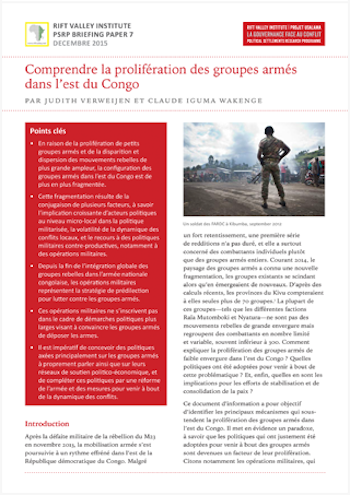
- By Judith Verweijen, Claude Iguma Wakenge
- Download
Après la défaite militaire de la rébellion du M23 en novembre 2013, la mobilisation armée s’est poursuivie à un rythme effréné dans l’est de la République démocratique du Congo. Malgré un fort retentissement, une première série de redditions n’a…
After the military defeat of the Mouvement du 23 mars (M23, March 23 Movement) rebellion in November 2013, armed mobilization in the eastern DRC has continued at a frightening pace. An initial, much-advertized wave of surrenders did not persist,…
The DRC has a bad reputation when it comes to gender equality and respect for women’s rights. Until now, the donor community and international media have mostly been focusing on sexual and gender-based violence (SGBV) in the eastern part…
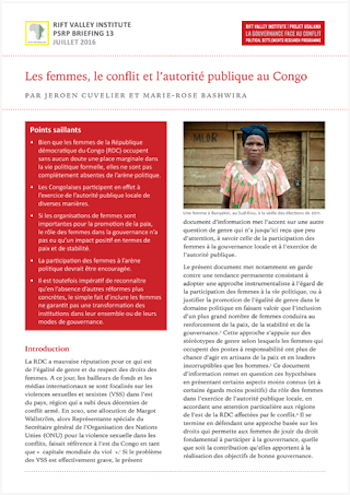
- By Jeroen Cuvelier, Marie-Rose Bashwira
- Download
La RDC a mauvaise réputation pour ce qui est de l’égalité de genre et du respect des droits des femmes. A ce jour, les bailleurs de fonds et les médias internationaux se sont focalisés sur les violences sexuelles et…
Land disputes are considered both key sources and perpetuating factors of conflict in the eastern Democratic Republic of the Congo (DRC). Over the years, scholars and practitioners have identified a number of critical land-related factors contributing to violence and…
Pendant la Seconde Guerre du Congo (1998–2003), le gouvernement de la République démocratique du Congo (RDC) et la société civile congolaise ont tenté, avec le soutien de partenaires internationaux, de venir à bout des cycles consécutifs de mobilisation armée….
Recent Publications
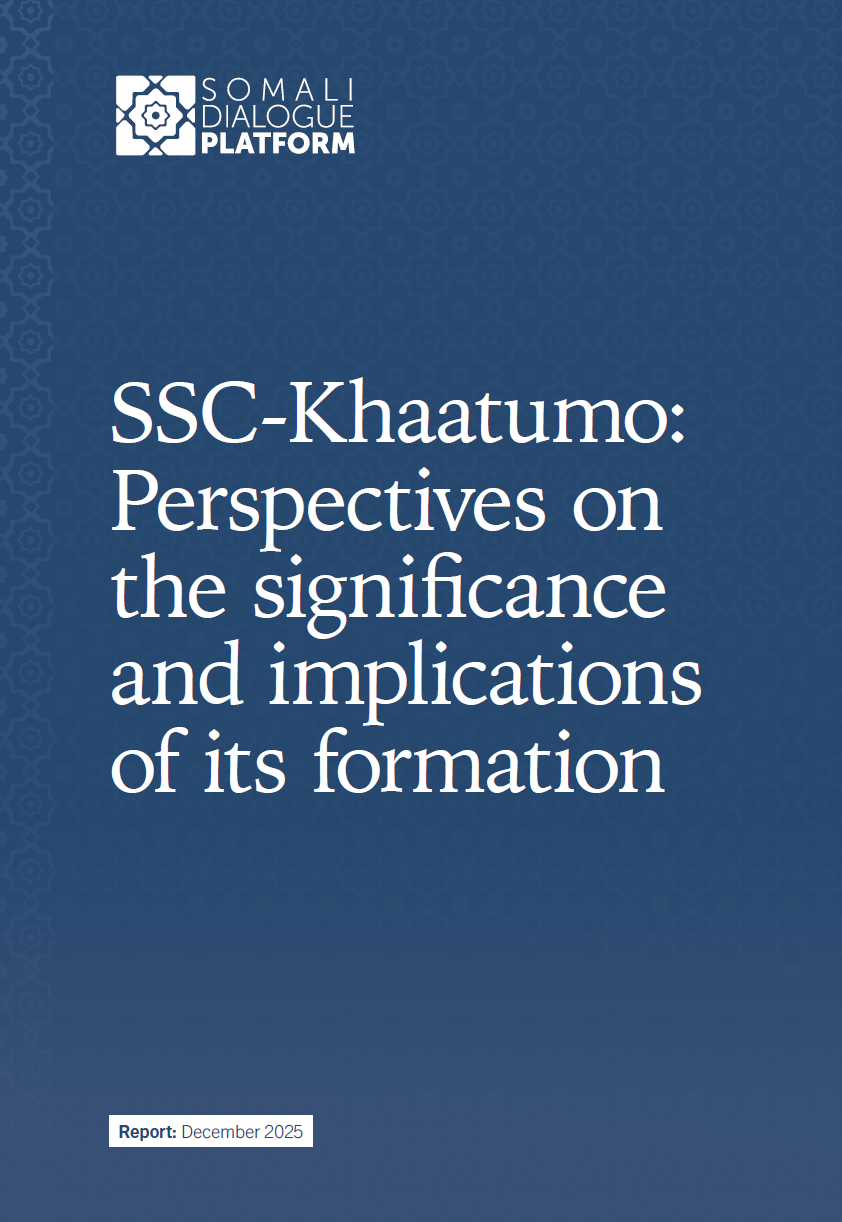
SSC-Khaatumo: Perspectives on the significance and implications of its formation
December 12, 2025
On 15 April 2025, during a visit to the city of Las Anod in Sool, Prime Minister Hassan Abdi Barre officially declared the federal government’s recognition of SSC-Khaatumo (SSC-K hereafter) as a federal member state, marking an important milestone in
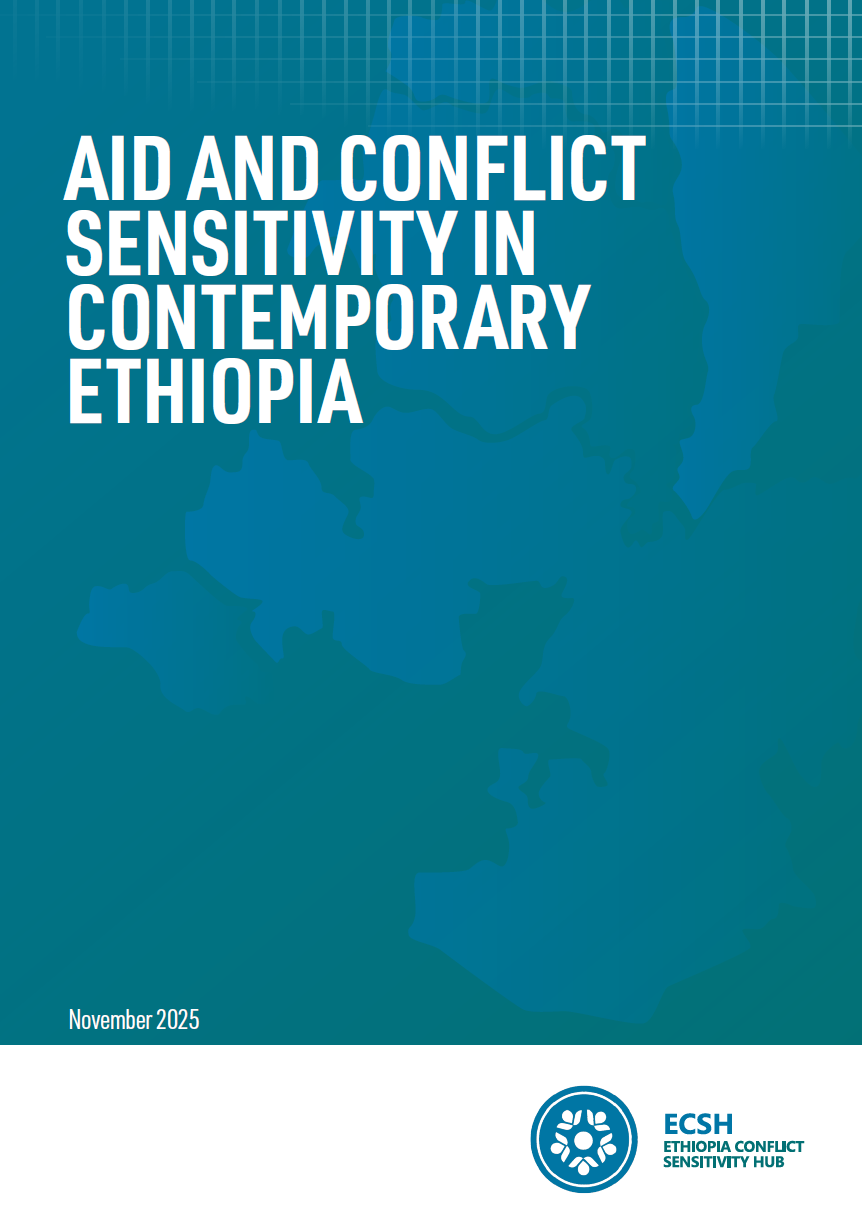
Aid and Conflict Sensitivity in Contemporary Ethiopia
November 17, 2025
This study assesses conflict sensitivity practices among humanitarian, development and peacebuilding (HDP) actors in Ethiopia. It seeks to raise awareness and foster a deeper understanding of the evolving aid landscape in the country while analysing the challenges that affect conflict-sensitive
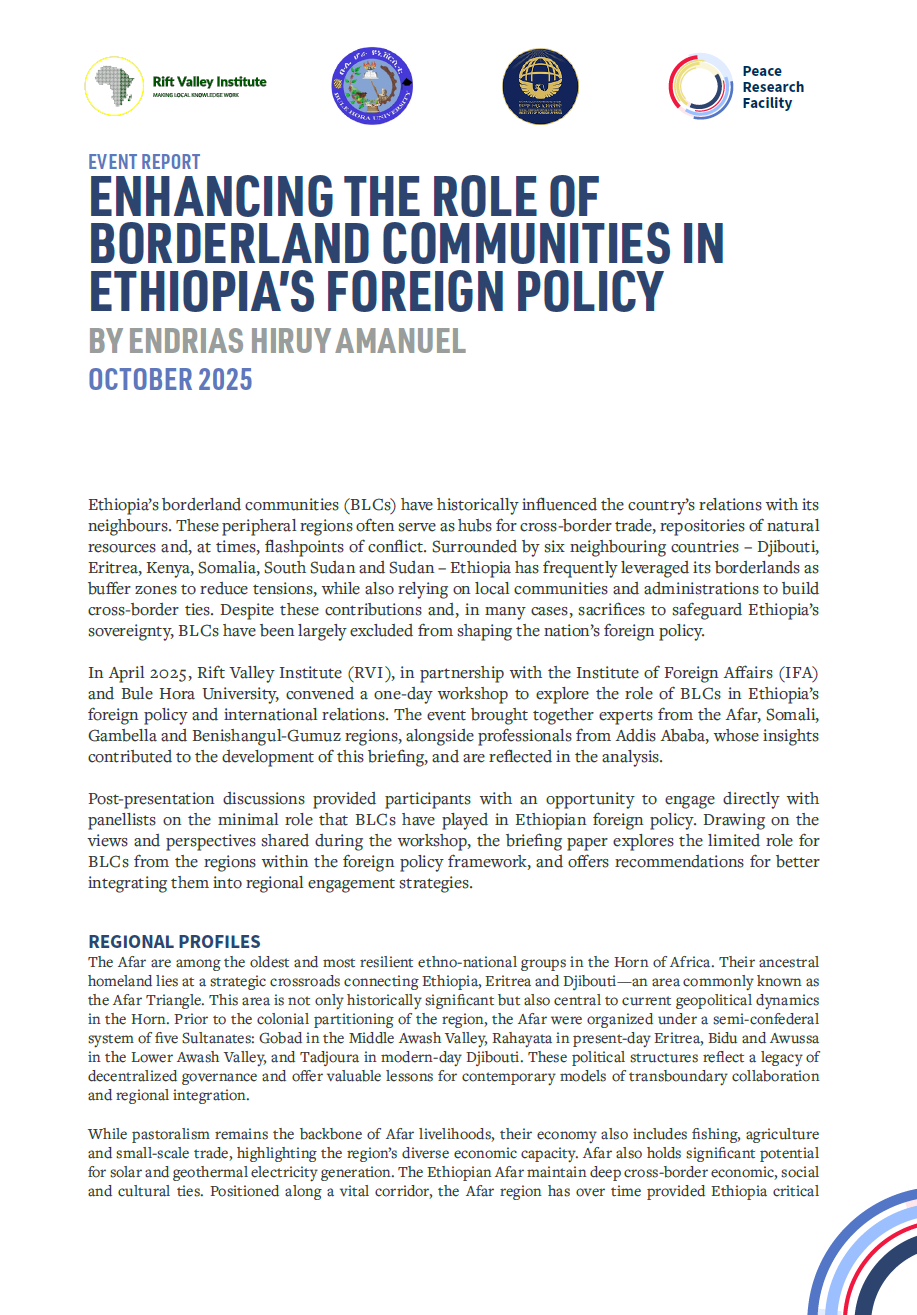
Enhancing the Role of Borderland Communities in Ethiopia’s Foreign Policy
October 15, 2025
Ethiopia’s borderland communities (BLCs) have historically influenced the country’s relations with its neighbours. These peripheral regions often serve as hubs for cross-border trade, repositories of natural resources and, at times, flashpoints of conflict. Surrounded by six neighbouring countries – Djibouti,
